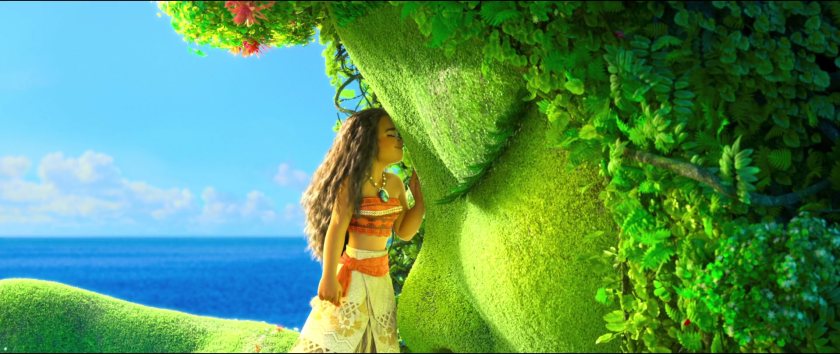In thinking of examples of powerful women being demonized, one need look no further than Hillary Rodham Clinton.

I don’t need to remind you. 2016 was a difficult year for all of us for a lot of reasons, and just one of those was the constant negative rhetoric surrounding HRC’s run for President, which seemed to be coming from everywhere – even the left-leaning. Trump was among the worst of them.
Of course, using sexism is also the laziest way to demean a woman. If you can’t debate her ideas, just slam her appearance, her personality, her relationships and her likeability. Trump crossed the line all the time. Flustered during the debate because he couldn’t out debate Clinton on policy, he just leaned into the mic and dismissed her entirely: “nasty woman.” – Mel Robbins for CNN (emphasis mine)
As I write this, HRC’s book sits at my feet, currently unopened. What Happened, indeed. I think we all know what happened – but I’ll read it, and I’m sure I’ll enjoy it.
Like any deep-rooted societal assumptions, the idea that powerful women are inherently evil can be found all over our favourite media. Golden Age Disney is no different. We love our Villainesses – The Evil Queen, Maleficent, and Lady Tremaine, the big three of powerful women whose actions make no sense. Later, Disney gave us such Villainesses as Cruella DeVil, Ursula, Madam Mim, the Queen of Hearts, Ysma, and Mother Gothel. As for protagonists, we had an overabundance of sweet-tempered Princesses, and a couple of ambitious ones – but none who could honestly be defined as powerful.
Frozen Breaks the Cycle
Not only was Elsa the first Disney Princess to be crowned Queen; she was also the first one to wield actual, dangerous power.
It wasn’t originally going to be like that:
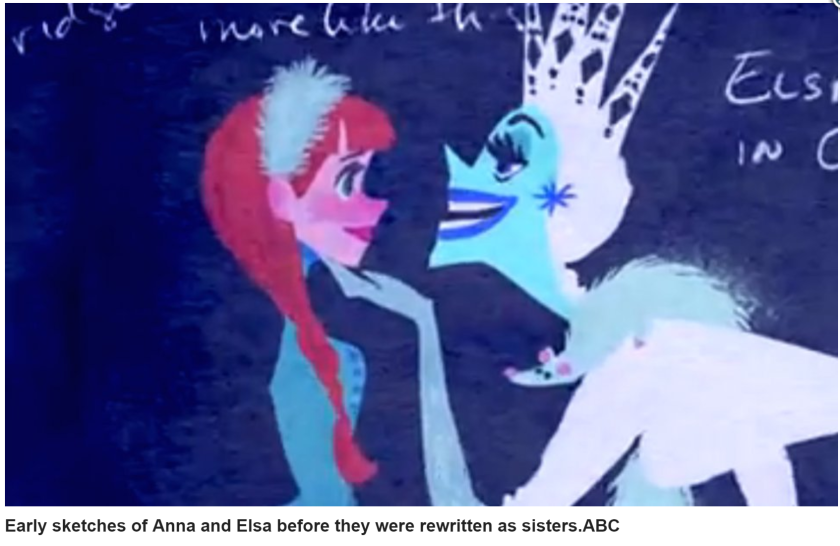
We all know about how Elsa was supposed to be the villain of Frozen. Thankfully that changed, because the movie we end up with was a much-needed change of pace.
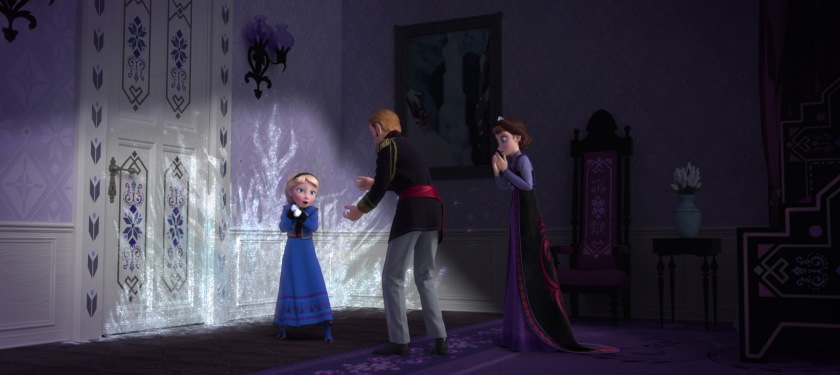
Rather than immediately vilify a woman with power, Frozen unpacked this a little bit – what it meant for Elsa to have to hide her power, knowing that the kingdom would fear her because of it. Given the current political climate, I almost begin to think she was right all along.
Frozen tells a story that rings true for many women – knowing you have power, but being afraid to use it in a world that sees powerful women as threatening.
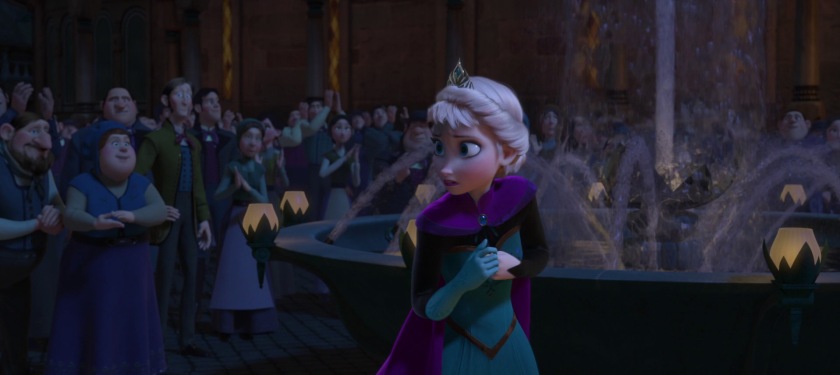
It’s a fear that consumes Elsa’s every waking moment; her very identity. This fear is what causes her to actually harm Anna – although the movie does not allow her to make too many mistakes, it does cause her to live out her worst fear – that she will freeze Anna’s heart, losing the only person who sees more than just her abilities.
Not long after Frozen came another story of a woman struggling with power:
Maleficent Atones for Sleeping Beauty’s Sins
As we’ve discussed at length, Maleficent takes a powerful woman who we have virtually no reason to sympathize with – except perhaps envy at her ability to spontaneously morph into a dragon – and gives us a reason to forgive something as severe as sentencing a newborn to death.

Sorry. But the truth is that Stefan (and the King before him) targeting Maleficent is just the same as the other examples I’ve noted in which people target, abuse, and attempt to destroy women who they see as a threat.
In doing so, Stefan creates the villain they feared she was – and unlike Elsa, Maleficent actually goes through with being a full-blown Disney Villain.
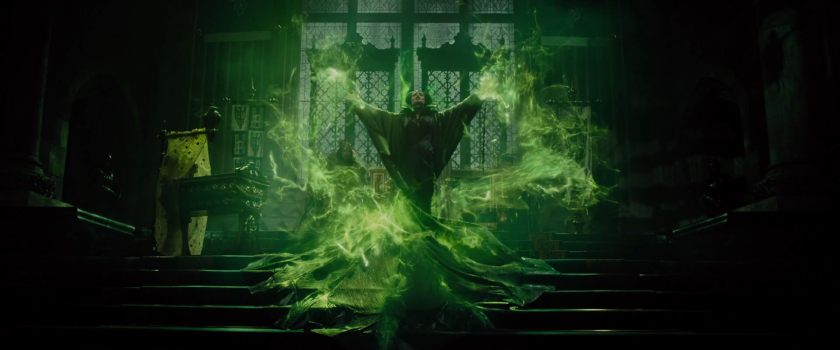
This done, Maleficent takes us along on a redemption arc in which our anti-villain (?) learns that women should protect each other, not sentence each other to an untimely death.
Powerful Women Don’t Necessarily Have To Destroy Each Other: A Disney Story
One thing that Frozen and Maleficent have in common is that each one takes True Love and un-hetero-normalizes it (there may have been a clearer way to say that, but I stand by it). In Frozen, Anna believes she needs to be saved by an “act of true love”, and this act turns out being sacrificing her life to save her sister.
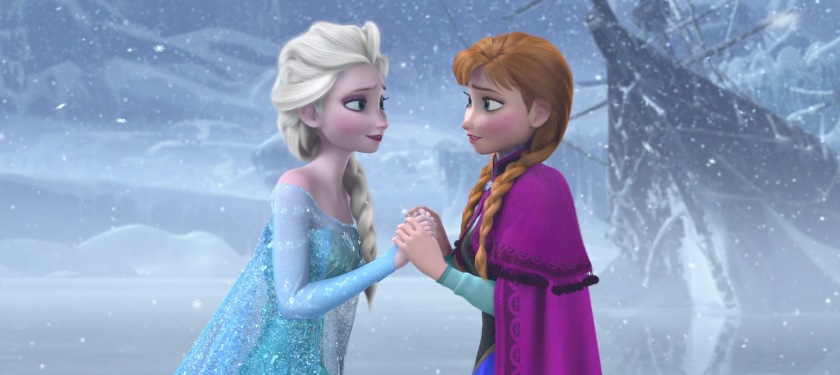
The moral of the story is that non-sexual relationships, familial relationships, sisterhood, and even relationships that don’t happen to involve men, have incredible power.
On the same vein, we replace Aurora’s “true love’s kiss” with a kiss from her surrogate mother figure, Maleficent.
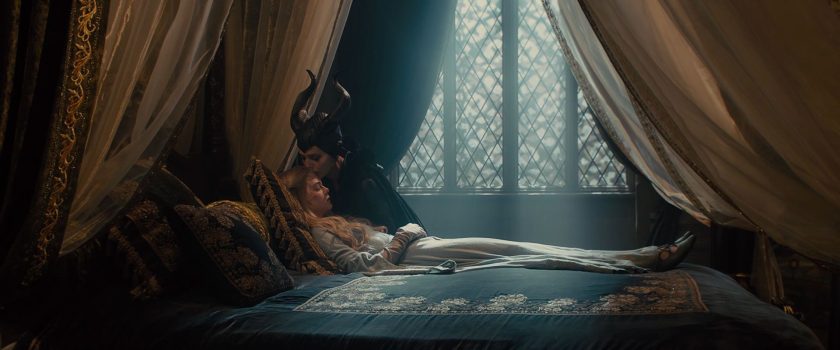
These resolutions, with Anna and Aurora (the traditional Disney Princesses) as catalysts, allow the stories to show powerful women in a softer light. And even though these women maintain close relationships with the other women in their lives, they remain powerful, ruling over their respective lands and using their incredible powers.
That Brings us to Moana
Please just assume that when I (three) talk Disney or Women or Movies from now on, I will always use Moana as the ultimate example because I am not over it yet.
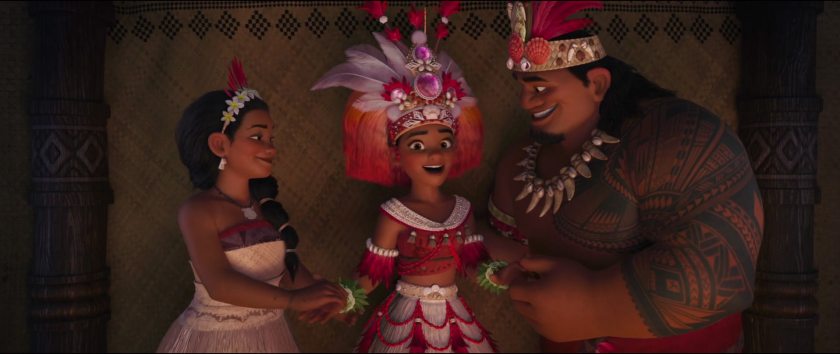
Moana is the daughter of the chief, and her political power can’t be understated. Although she is only learning to rule in the duration of the film, she shows aptitude for critical thinking, a passionate dedication to her people, and most importantly, a unique ability to bring them back to their roots as voyagers. Unlike Elsa and Maleficent, Moana is never targeted for her power – it is framed as a burden, and a challenge, but she is never vilified for it.
That’s where Te Ka comes in.
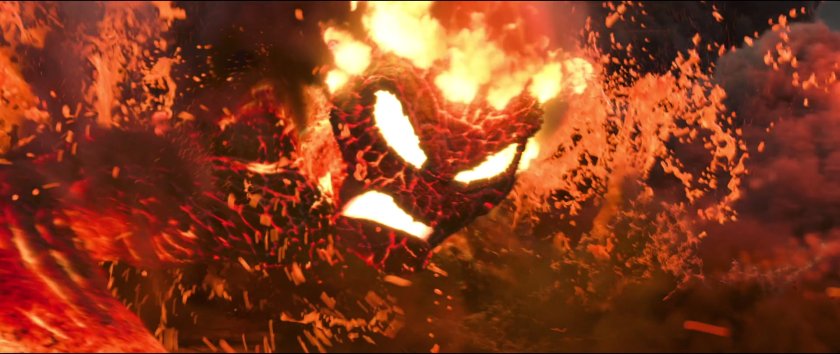
In the prior two examples, Elsa and Maleficent have a kind-hearted traditional princess – Anna and Aurora – to lend softness to their character. In Moana, things aren’t so simple. Te Ka does not show Moana any kindness, or give her any reason to give her the benefit of the doubt – it’s Moana who sees past Te Ka’s terrifying exterior and realizes that someone has done this to her.
This creates an interesting comparison to Maleficent, who spends the entire movie redeeming herself for one mistake, which honestly, we kind of already forgave her for. In comparison, no one expects Te Fiti to apologize for ruining everything after she has her heart stolen.
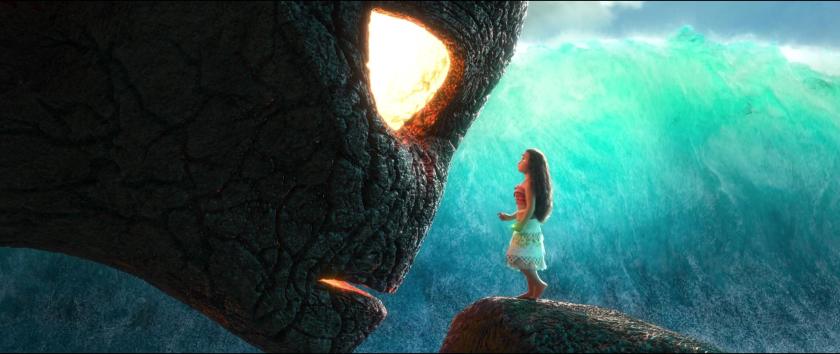
This comparison isn’t completely parallel: Elsa and Maleficent are unfairly feared and targeted for their power, whereas Te Fiti, a literal god, is not vilified in the slightest; at least not until she becomes a giant lava monster. I’ll go ahead and argue that it is fair to see Te Ka as a villain, given that she’s utterly terrifying and is trying to kill everyone.
The main message I want to distill from that comparison, however, is that we are still very careful about how we portray forgivable powerful women. Elsa barely even does anything wrong. Maleficent does one thing wrong one time, and does so as a rash but understandable act of revenge after she was attacked by Stefan-the-terrible. Despite the fact that it should actually be pretty easy to forgive Maleficent, and there is literally nothing to forgive Elsa for, both of their characters were not allowed to get away with it – Elsa suffers years of anxiety after hurting Anna by accident one time, and Maleficent spends sixteen years learning to love the child she rashly sentenced to death. Te Fiti, on the other hand, destroys like half the ocean, and when Moana figures this out it’s as simple as:
They have stolen the heart from inside you
But this does not define youThis is not who you are
You know who you are
This embodies what I find so refreshing about women in Moana: It’s a given that they are powerful, and it’s okay. No one has to suffer the guilt that Elsa and Maleficent feel for their effects on others – they can just focus on the plot, the character development, and the journey.
